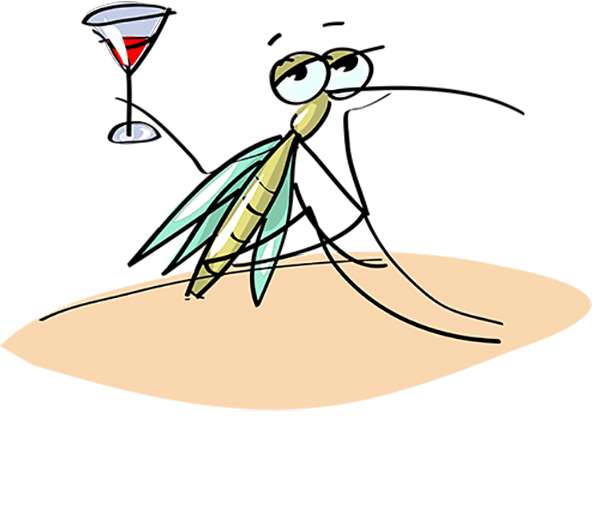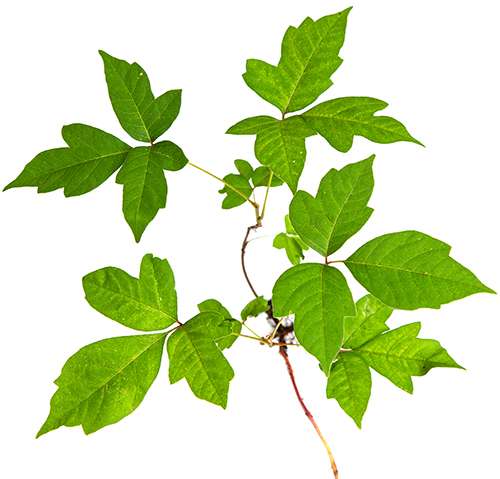It’s been said that mosquitos’ should be the state bird in the Midwest. Of course, that’s been said in every state, but the point is mosquitos’ are about as much fun on a camping trip as rain.
Likewise, who among us haven’t suffered the itchy effects of a good infection from poison ivy? There are few things that can ruin a good camping trip than getting caught in a patch of poison ivy — except maybe a swarm of mosquitos’.
Of course, everyone knows someone who claims to not attract mosquitos’, prompting the little bloodsuckers to concentrate their efforts on the lucky few who are a walking buffet. And there are even a handful of people out there immune to poison ivy. To all those people, I say this: Go away and leave me to suffer without your gloating.
That said, there are things we can do avoid being bit or stung by mosquitos’ and other harmful insects as well as not fall victim to poison ivy and other harmful plants.
Insects
There are two main mosquito repellents — deet and permethrin — tha t are
t are
recommended and are the only chemicals approved for use in the U.S. Department of Defense protection system.
Deet is the most common insect repellent worldwide and is available in many forms by many brands at many retailers. Permethrin is a contact insecticide applied to clothing, gear, mosquito nets and bedding and is not applied directly on the body (although it is harmless to human skin). Permethrin is available as an aerosol or pump spray to be applied to clothing, or pre-applied clothing is also sold at outfitters nationwide.
When used together, they provide nearly 100% protection from ticks, mosquitoes, chiggers, fleas and other harmful insects.
Another repellent, or so the Internet would have me believe, is to put a clump of sage in your campfire. We grew sage in our garden this year to test that claim. I’m still itching to try it out (get it?).
Of course, mosquitoes aren’t the only major pain in the neck (and anywhere else they decide to feast). Black flies, ticks, chiggers — even ants have been known to ruin a picnic or two. Some species of spiders are also a concern as well as other insects, but 99% of the time they will only bite when provoked.
Another category of harmful insects are the stinging variety, such as bees, wasps, hornets and yellow jackets.
Here’s some general tips regarding stinging insects:
- Seek emergency medical help immediately if the victim has a history of serious reactions to stings or if a serious reaction develops. Symptoms may include rapidly appearing hives, accompanied by severe itching. In a severe allergic reaction called anaphylactic shock, the tissues of the throat swell and the victim may have difficulty breathing and, unless promptly treated, death may result.
- If you are allergic to insect strings, be sure to have appropriate first aid material with you. Make sure those with you know what to do for you in case of an emergency.
- Be aware of surroundings and listen for buzzing. Stay alert, especially when near bees or wasps. Watch for yellow jacket nests (usually in the ground) and be sure not to bump into a gray paper nest of the tree-dwelling bald-faced hornet.
- Avoid wearing strong perfumes, particularly floral-scented ones. Wear light-colored clothing as opposed to dark or brightly colored clothes, which seem to attract bees and wasps.
- If chased by a swarm, escape to a body of water and remain submerged until they leave. If not water is available, place your hands and forearms across your head to protect your eyes, throat and neck. Move away quickly and quietly, as agitated movement and noise can irritate the insects and cause further attacks.
- Do not leave opened cans of sweet drinks standing around. Always check before drinking from an open container, even if it contains only water.
Plants
When identifying poison ivy, we’ve all heard the phrase, “Leaves of three, let them be.” But there’s more to it than that.
But there’s more to it than that.
Poison ivy is a very widespread and prolific plant, frequently appearing along the edge of roadways, paths and other disturbed areas and, according to the Michigan State University Extension Service, poison ivy can be a bit of a chameleon.
It looks similar to several common backyard plants including Virginia creeper and boxelder. The leaves of poison ivy may be shiny or dull and the leaf margins may be toothed or wavy, or have no teeth at all. The leaves may or may not be hairy. Its appearance can vary greatly, but in all cases it has compound leaves that consist of three leaflets. The leaflets are 2-5 inches long, green during the growing season and turning scarlet red in fall. The leaves are arranged in an alternate pattern on the stem. The terminal (end) leaflet has a longer stalk than the lateral (side) leaflets.
Poison ivy can take the form of an erect shrub or climbing vine or grow in large colonies along the ground.
In addition to poison ivy, poison sumac and nettles are also prevalent.
Like poison ivy, poison sumac has urushiol, a plant oil that can cause a severe skin rash.
More allergenic than poison ivy and poison oak is poison sumac, a deciduous woody shrub or small tree that grows 5–20 feet tall and has a sparse, open form, according to the University of Florida Extension Service. It inhabits swamps and other wet areas, pine woods, and shady hardwood forests.
Poison sumac leaves consist of 7–13 leaflets arranged in pairs with a single leaflet at the end of the midrib. Distinctive features include reddish stems and petioles. Leaflets are elongated, oval, and have smooth margins. They are 2–4 inches long, 1–2 inches wide, and have a smooth, velvety texture.
Nettles, also known as the “stinging nettle,” is especially found along waterways. Sharp, stinging, tiny hairs encompass this entire plant. Each tiny, hollow hair contains a droplet of formic acid. Stinging nettles have tiny, fuzzy-like white flowers.
What’s ironic is the nettle is actually edible and used for many medicinal purposes. Thanks, but I’ll stick to my s’more.
What to do if you come into contact with a harmful plant:
- Wash the exposed area thoroughly as quickly as possible.
- Clean hands well, especially under fingernails.
- Apply cool compresses to affected parts.
- Wash all clothing worn at time of exposure.
- Calamine lotion or cortisone cream may be used to relieve mild itching.
- Contact your physician if the rash is sever and widespread.
See you next week when we talk about “How to Drive Your RV in Poor Weather Conditions.”
Rick Kessler
(Gr8LakesCamper)
Gr8LakesCamper celebrates the world of RV Camping in the Great Lakes region. Gather around the campfire and share tips, ideas and stories on RVing, camping and travel destinations. Follow Gr8LakesCamper on Twitter, Facebook, Pinterest and the Gr8LakesCamper blog.